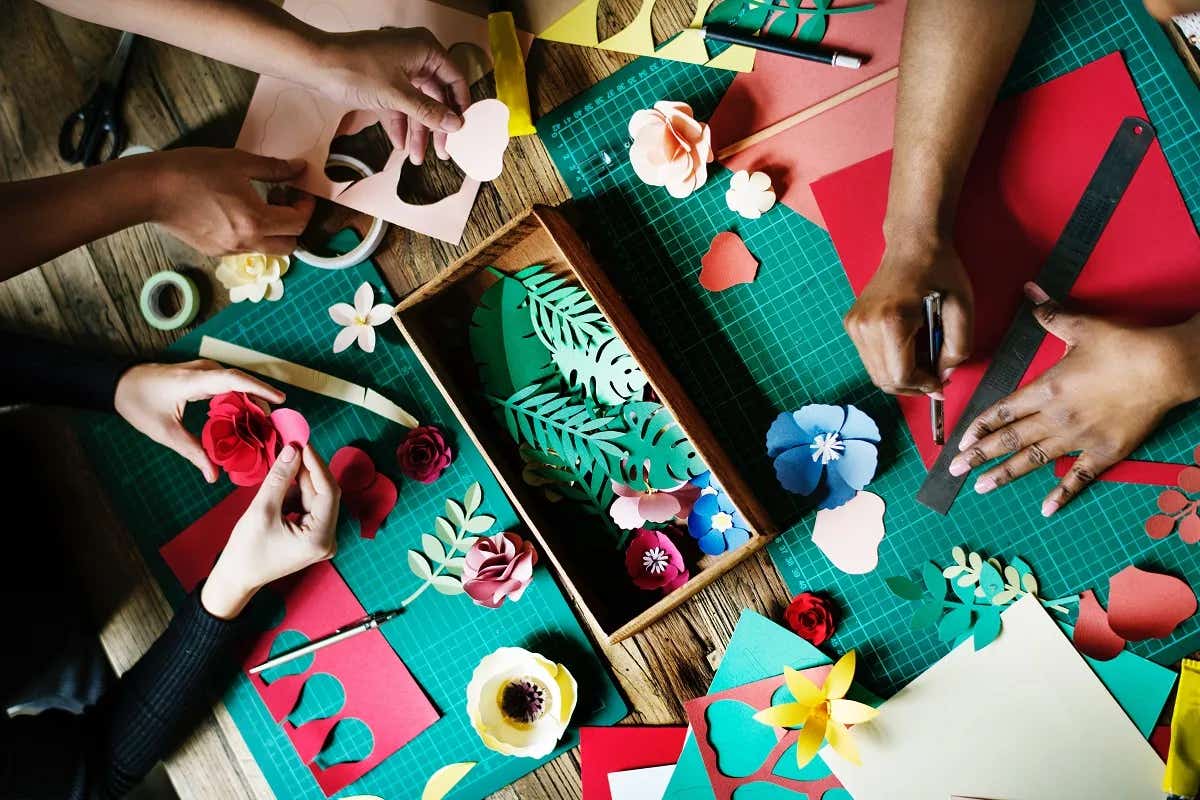Arts and crafts can improve mental health and well-being, study finds
Scientists find that taking part in creative activities boosts people’s sense that life is worthwhile, their happiness, and their satisfaction with life

Crafting and other artistic activities showed a meaningful effect in predicting people’s sense that their life is worthwhile. (CREDIT:
Tinybeans)
A recent study published in Frontiers in Public Health suggests that engaging in arts and crafts may significantly enhance mental well-being. Given their affordability and accessibility, encouraging more people to participate in creative activities could be a powerful tool for improving public mental health.
Dr. Helen Keyes from Anglia Ruskin University, the study's lead author, highlighted the impact of these activities, stating, "Crafting and other artistic activities showed a meaningful effect in predicting people’s sense that their life is worthwhile. Indeed, the impact of crafting was bigger than the impact of being in employment. Not only does crafting give us a sense of achievement, it is also a meaningful route to self-expression. This is not always the case with employment.”
The urgency to improve mental health following the Covid-19 pandemic motivated this research. With widespread concern about rising loneliness and declining well-being, identifying effective, scalable interventions has become a priority.
Some previous studies have shown that specific crafts can be therapeutic for those with mental health conditions. However, this research focused on whether engaging in arts and crafts could positively impact those without a diagnosed illness, thereby contributing to overall public mental health.
The study analyzed data from 7,182 participants of the UK’s Department for Culture, Media, and Sport’s annual Taking Part survey, which tracks public engagement in cultural, digital, and sporting activities.
This comprehensive data set allowed the researchers to assess the effects of creative arts more broadly, rather than focusing on specific crafts. Importantly, it also enabled them to examine the potential impact of arts-based interventions outside of clinical settings.
To ensure the accuracy of their findings, the researchers accounted for various sociodemographic factors known to influence well-being, such as gender, age, health, employment status, and economic conditions. Typically, poor health, unemployment, and higher levels of deprivation are associated with lower well-being.
Related Stories
Participants were asked to rate their feelings of happiness, anxiety, life satisfaction, and whether they believed their life was worthwhile. They also reported how often they felt lonely. Among the respondents, 37.4% confirmed participating in at least one craft activity over the past year.
Those involved in arts and crafts reported higher levels of happiness, life satisfaction, and a stronger belief that life is worthwhile. The boost to their sense that life is worthwhile was as significant as the effect of being employed. However, involvement in arts and crafts did not appear to reduce feelings of loneliness. This might be because some crafts are solitary activities, suggesting the need for further research to explore the social aspects of crafting.
Dr. Keyes emphasized the broader implications of these findings, stating, “Engaging in these activities is linked with a greater sense that life is worthwhile, increased life satisfaction and happiness. The wellbeing effects were present even after we accounted for things like employment status and level of deprivation. It seems that crafting can contribute positively to your wellbeing above and beyond these other aspects of your life.”
Although the effects are relatively modest, they are comparable to those of sociodemographic variables, which are much more difficult to change. Therefore, harnessing the positive impact of creative activities presents a valuable opportunity to enhance public well-being.
“Governments and national health services might consider funding and promoting crafting, or even socially prescribing these activities for at-risk populations, as part of a promotion and prevention approach to wellbeing and mental health,” suggested Dr. Keyes.
Reflecting on the personal satisfaction that comes from creative work, Dr. Keyes, who enjoys DIY projects, particularly painting and decorating, added, “There is certainly something immensely satisfying about seeing the results of your work appear before your eyes. It feels great to focus on one task and engage your mind creatively.”
However, the study's authors caution that their research is correlational, not proving causation. “We can’t know for certain whether crafting is directly causing this increase in wellbeing,” Dr. Keyes noted. “The next step would be to carry out an experimental study where we measure people’s wellbeing before and after significant periods of crafting.”
This study opens the door to further exploration of how creative activities could be a simple yet powerful way to improve public mental health.
Note: Materials provided above by The Brighter Side of News. Content may be edited for style and length.
Like these kind of feel good stories? Get The Brighter Side of News' newsletter.
Rebecca Shavit
Science & Technology Journalist | Innovation Storyteller
Based in Los Angeles, Rebecca Shavit is a dedicated science and technology journalist who writes for The Brighter Side of News, an online publication committed to highlighting positive and transformative stories from around the world. With a passion for uncovering groundbreaking discoveries and innovations, she brings to light the scientific advancements shaping a better future. Her reporting spans a wide range of topics, from cutting-edge medical breakthroughs and artificial intelligence to green technology and space exploration. With a keen ability to translate complex concepts into engaging and accessible stories, she makes science and innovation relatable to a broad audience.



